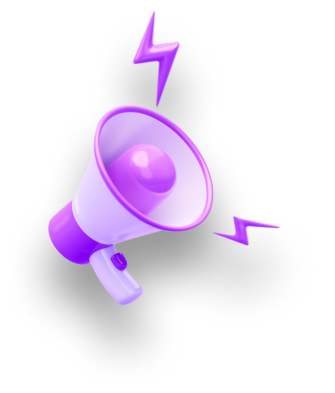Find out if you have what it takes to get international media coverage.
How to Write a Press Release from Scratch
Writing a press release can be a powerful way to get your message out to a wide audience, whether you’re promoting a new product or service, announcing an event, or sharing important news about your organisation. But where do you start?
Understanding the Purpose of a Press Release
First, we’ll answer the question, why do companies or organisations use press releases to communicate with the media and the public? Then, we’ll touch on the different types of press releases, such as product launches, company updates, and crisis communications.
Companies and organisations use press releases as a way to communicate with the media and the public because they provide a formal and structured format for sharing important news or updates. Press releases can be distributed to a wide range of media outlets, such as newspapers, magazines, TV and radio stations, online publications, and blogs, which can help to amplify the message and reach a broader audience.
By using a press release, companies and organisations can control the messaging and ensure that key information is communicated accurately and effectively. It also allows them to establish a professional and authoritative voice in their industry or field, as well as build credibility and enhance their reputation. In addition, press releases can help to generate media coverage and attention, which can be valuable for promoting products, services, or events, and can also attract potential customers, investors, or partners. Overall, press releases are an effective way for companies and organisations to share their news and connect with their target audience.
A press release is a written communication that companies or organisations use to share news, updates, or other information with the media and the public. There are several reasons why companies might choose to issue a press release, including announcing a New Product/Service, Sharing Company News or Updates, Responding to a Crisis or Issue, Establishing Thought Leadership, and Building Relationships with the Media.
When a company is launching a new product or service, a press release can help generate buzz and attract media attention. This type of press release might include details about the product, its features, and how it differs from competitors.
Companies might issue press releases to share news about recent milestones, such as reaching a certain number of customers, expanding into new markets, or acquiring a new company. These types of press releases help keep the public and the media informed about the company’s activities and growth.
In the event of a crisis or issue, such as a product recall or a data breach, a press release can help the company communicate important information to the public and address concerns. These types of press releases might include details about what happened, what the company is doing to address the situation, and how customers can stay informed.
Some companies also use press releases to share their expertise and thought leadership on industry trends or issues. These types of press releases might include insights from company executives, data or research findings, or commentary on current events.
Issuing regular press releases can help companies build relationships with journalists and bloggers who cover their industry. By sharing interesting and newsworthy information on a regular basis, companies can establish themselves as reliable source of information and build rapport with members of the media.
Each type of press release will have a different focus and tone, but all of them aim to communicate important information to the public and generate interest and coverage from the media.
Structuring Your Press Release

Here, the article would discuss the typical format of a press release, including the headline, subheadline, body, boilerplate, and contact information. It would also provide tips on how to make each section of the press release compelling and informative.
The structure of a press release is important to ensure that the information is presented in a clear and organized way, and to help journalists quickly understand the main points of the story. Here is a brief overview of the different sections of a typical press release:
- Headline
The headline is the first thing that readers will see, so it should be attention-grabbing and concise. It should summarise the main point of the press release in a few words.
- Subheadline
Some press releases include a subheadline, which provides additional information or context for the headline. This section is optional, but can be useful if the headline doesn’t fully convey the message of the press release.
- Body
The body of the press release should provide more detail about the news or announcement being made. It should answer the basic questions of who, what, when, where, why, and how. The body should be structured in a logical way, with the most important information at the beginning.
- Boilerplate
The boiler plate is a short paragraph at the end of the press release that provides background information about the company or organisation issuing the press release. This section should be written in a consistent style and tone, and should include basic information such as the company’s name, location, and mission.
- Contact information
The press release should include contact information for a person who can answer questions from the media or provide
- Writing Style and Tone
This section would cover the importance of using clear and concise language in a press release. It would also discuss the appropriate tone for different types of press releases and how to avoid common writing mistakes.
- Including Quotes and Multimedia
To make a press release more engaging, it’s often a good idea to include quotes from company leaders or subject matter experts, as well as images or videos that support the story. This topic would cover best practises for including multimedia elements in a press release.
- Distributing Your Press Release:
Finally, the article could touch on how to distribute your press release to the media and other stakeholders. This might include tips on building a media list, using a press release distribution service, and following up with journalists and bloggers who cover your industry.
Releasing Your Press Release

A press release is a written statement that is distributed to the media to announce news, events, or other information that is relevant to a company or organization. Press releases are an important tool in the field of public relations, as they allow businesses and organizations to share their news and announcements with a wide audience and generate media coverage.
In PR, the goal is to build positive relationships between a company or organization and its stakeholders, including customers, employees, investors, and the media. By creating and distributing press releases, businesses can share their news and accomplishments, demonstrate their expertise, and promote their brand to a wider audience. Press releases can also help businesses to build relationships with journalists and media outlets, which can lead to additional media coverage and increased visibility.
Press releases are a key component of a comprehensive PR strategy. By crafting clear and compelling messages and distributing them through appropriate channels, businesses can use press releases to generate media coverage, build relationships, and achieve their PR goals.
Timing: Choose the right time to release your press release. Consider factors such as the news cycle, holidays, and industry events when deciding on a release date.
Target audience: Identify the target audience for your press release. This can include journalists, bloggers, investors, customers, and other stakeholders.
Distribution channels: Decide on the distribution channels for your press release. This can include wire services, email lists, social media platforms, and your company website.
Formatting: Ensure that your press release is properly formatted and follows industry standards. This includes including a headline, subheadline, body copy, boilerplate, contact information, and relevant multimedia.
Messaging: Craft a clear and compelling message for your press release. This should focus on the key news or announcement that you are sharing and include relevant quotes and statistics to support your message.
Follow-up: Plan to follow up with journalists and other recipients after you release your press release. This can help you to secure media coverage and build relationships with key stakeholders.
Monitoring: Monitor media coverage and social media mentions of your press release. This can help you to track the impact of your release and make adjustments to your PR strategy as needed.
Releasing a press release requires careful planning and execution. By considering factors such as timing, target audience, distribution channels, formatting, messaging, follow-up, and monitoring, you can maximize the impact of your press release and achieve your PR goals.
